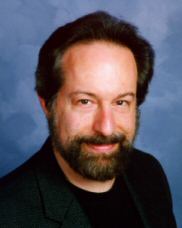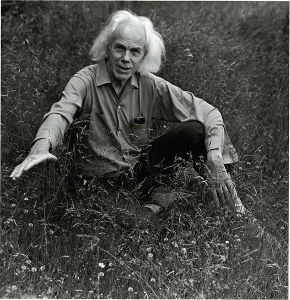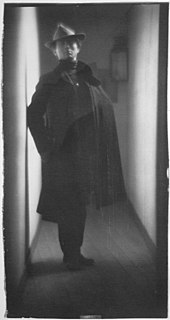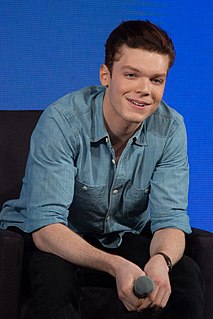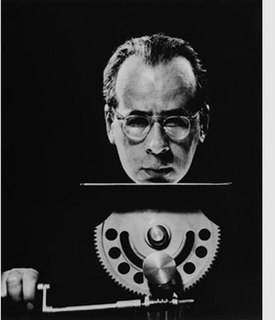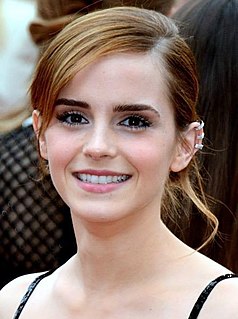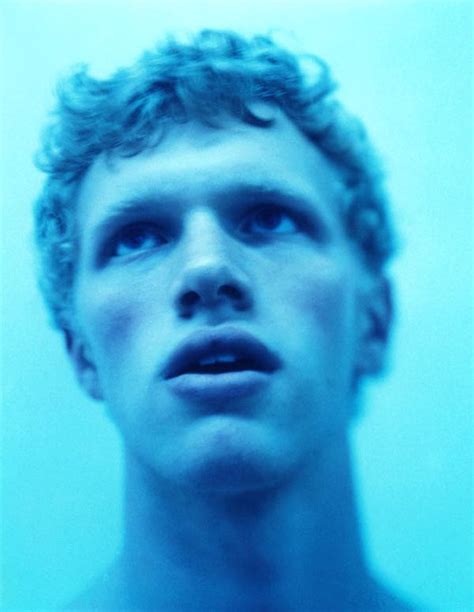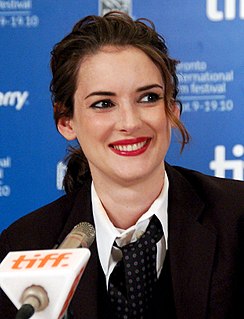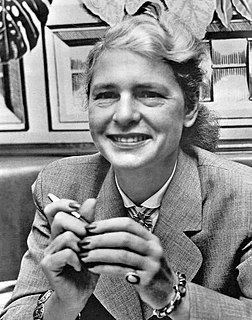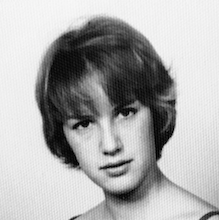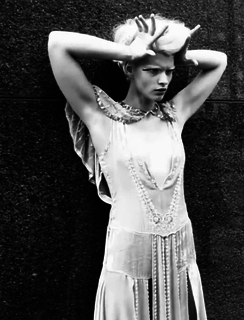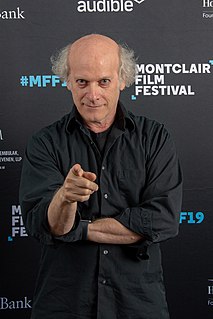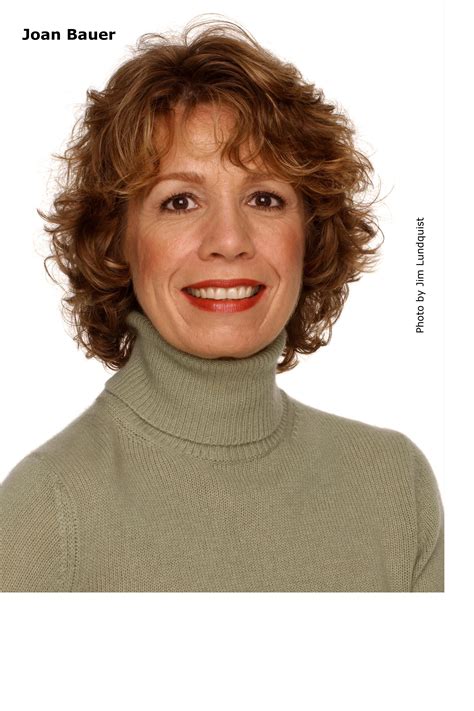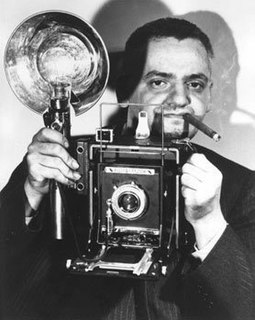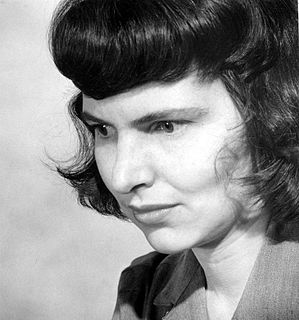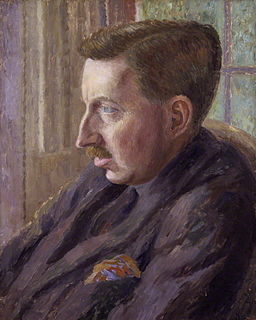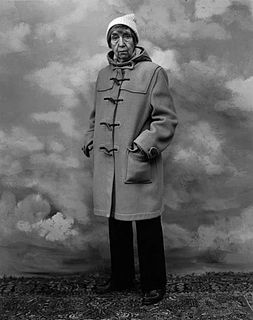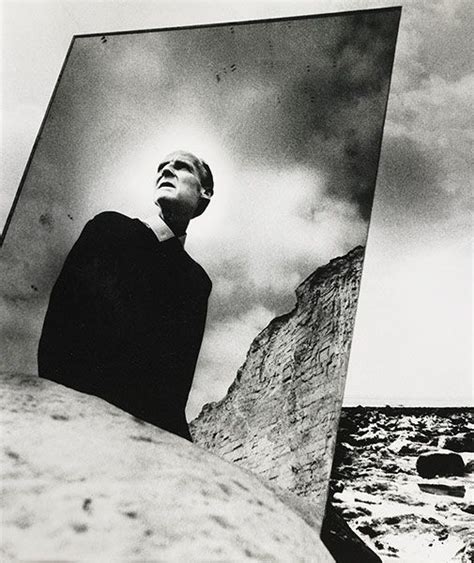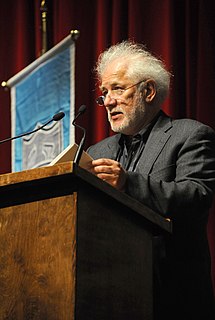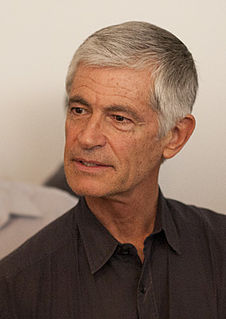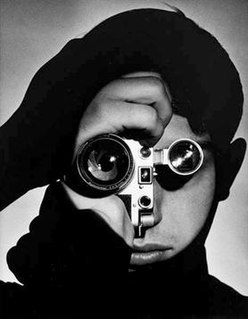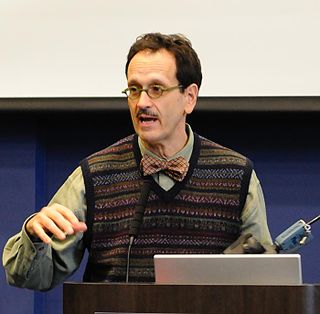Top 995 Photographer Quotes & Sayings - Page 17
Explore popular Photographer quotes.
Last updated on December 22, 2024.
Books on scientific photography with such beauty, breadth, and insight are rare. Felice Frankel's Envisioning Science is chock full of mind-boggling images and valuable information--not only for curious artists, students, and lay people, but also for seasoned researchers and photographers. The eclectic Frankel is both a scientist and photographer, and with the cold logic of the one and the inspired vision of the other, she covers an array of topics sure to stimulate your imagination and sense of wonder at the incredible vastness of the physical world.
The state of mind of the photographer creating is a blank. I might add that this condition exists only at special times, namely when looking for pictures. -Something keeps him from falling off curbs, down open manholes, into bumpers of skidding trucks while in this condition but goes off duty at other times. . . . This is a very special kind of blank. A very active state of mind really, it is a very receptive state. . .
My mother loaned me $1000. The first issue came out at the end of 1953. I knew I needed something original. I had a photographer shoot a 3D feature for the first issue and learned it would cost too much money. When the 3D thing turned out to be too expensive, at that same moment I came across the photos of Marilyn Monroe.
Photography is a medium of formidable contradictions. It is both ridiculously easy and almost impossibly difficult. It is easy because its technical rudiments can readily be mastered by anyonwith a few simple instructions. It is difficult because, while while the artist working in any other medium begins with a blank surface and gradually brings his conception into being, the photographer is the only imagemaker who begins with the picture completed. His emotions, his knowledge, and his native talent are brought into focus and fixed beyond recall the moment the shutter of his camera has closed.
Don't get me wrong, Carter Smith is an insanely talented photographer, but as a director he approached it more from a story standpoint. He definitely had an interest in communicating the text and the characters first, and he allowed his cinematographer Darren Lew to really find the visuals - of course, he worked with him throughout the entire Jamie Marks Is Dead movie, it was a collaborative effort. While the movie is very visually beautiful, in my opinion, very visually striking, Carter was definitely approaching it from a performance standpoint first.
Now everyone's main objective of taking photographs is to have a photograph for Twitter or Facebook. I find that troubling. If you have an opportunity to meet the Dalai Lama, don't work out your camera or iPhone issues. Sit and a listen to what the man is saying, because nine times out of 10, you're not going to look at that photo. You're not going to look at the video. As a photographer, I don't carry a camera. I have my iPhone, but I don't carry a camera. I want to live.
When the photographer Philippe Halsman said, 'Jump,' no one asked how high. People simply pushed off or leapt up to the extent that physical ability and personal decorum allowed. In that airborne instant Mr. Halsman clicked the shutter. He called his method jumpology.
The idea of having people jump for the camera can seem like a gimmick, but it is telling that jumpology shares a few syllables with psychology. As Halsman, who died in 1979, said, 'When you ask a person to jump, his attention is mostly directed toward the act of jumping, and the mask falls, so that the real person appears.'
People who are close to me know, they so know that there were days when I was so tired that I would fall asleep anywhere. The onset photographer has pictures of me falling asleep everywhere. Like on chairs, on the floor, in the middle of a set, all curled up. There were times when crew members didn't know where to find me, but they knew I'd be curled up in a ball somewhere.
At the beginning of my career, a more senior photographer told me to shoot stories on women and I didn't want to. But I spent two and a half years in India and chose to do stories about women because I was shocked by their treatment. My stories in the Middle East and on the border of Europe and Asia were a response to my time in India. They weren't driven by a feminist idea but when you're moved by women's issues in these countries you can't help becoming a feminist somehow.
I thought about how to film something, how to take pictures of it and how to mix it all together. And I was getting that through Patti [Smith] - because she takes pictures, performs, writes; she does so many things, and that was a big inspiration to me. It helped me realized that I'm not just a fashion photographer. I wanted to do all these other artistic things as well, and during filming my mind opened up to those possibilities.
I was so lucky that I got to meet certain people. It came through Roddy McDowall, who had become a photographer and would do these portraits of celebrities. Then he would get another well-known person to write a thing. He photographed me when I was 15 or 16, and he got Jason Robards to write the thing because he was sort of my mentor. And Roddy would invite me to these dinner parties that were insane. Like, Elizabeth Taylor and Maureen O'Hara and people that were just crazy. I still can't really believe that I met them.
When you're a well-known fashion photographer, modeling agencies call constantly. They'll say, This great girl is in town for three days. She's excellent, she's exciting. You've got to see her... So I decided to really have a look at them. I opened up my studio and said, Send anyone... And I became quite addicted to the whole thing. I was curious to see how many girls would come. I couldn't believe that there really were so many around.
The element of discovery is very important. I don't repeat myself well. I want and need that stimulus of walking forward from one new world to another. There is something demoralizing about going back to a place to retake pictures. You can no longer see your subjects in a fresh eye; you keep comparing them with the pictures you hold in your memory. [The] world was full of discoveries waiting to be made...(as a photographer) I could share the things I saw and learned...you would react to something all others might walk by.
I think you reveal yourself by what you choose to photograph, but I prefer photographs that tell more about the subject. There's nothing much interesting to tell about me; what's interesting is the person I'm photographing, and that's what I try to show. [...] I think each photographer has a point of view and a way of looking at the world... that has to do with your subject matter and how you choose to present it. What's interesting is letting people tell you about themselves in the picture.
[Photographer Julian Wasser] had this great idea that I should play chess naked with Marcel Duchamp and it seem to be such a great idea that it was just like the best idea I'd ever heard in my life. It was like a great idea. I mean, it was - Not only was it vengeance, it was art, and it was, like, a great idea. And even if it didn't get any vengeance, it would still turn out okay with me because, you know, I would be sort of immortalized.
I think we, as a fasion industry, need to hold people accountable for their actions. I want people to realize that models have a voice, and a powerful one at that. I want all models to be treated with more respect because that's what we all want - basic respect and to not be treated like objects with no will. I hope that models can be more empowered to say 'no' or give their opinion without being labeled as difficult. Modeling should be a collaboration. If the makeup artist, photographer and stylist all contribute, why can't models?
The difference between an amateur and a professional photographer is that the amateur thinks the camera does the work. And they treat the camera with a certain amount of reverence. It is all about the kind of lens you choose, the kind of film stock you use… exactly the sort of perfection of the camera. Whereas, the professional the real professional – treats the camera with unutterable disdain. They pick up the camera and sling it aside. Because they know it’s the eye and the brain that count, not the mechanism that gets between them and the subject that counts.
Ninety-nine percent of girls want to be models because they believe it will mean that they are the most beautiful women in the world. They think that they will wear expensive clothes, makes loads of money, travel a lot and have a rock star for a boyfriend. This never interested me. I didn't want anyone to scream out my name. I wanted to make art, to create an image with a photographer. And yes, I wanted to get out of Clinton, Mississippi - a small town that was so closed-minded you can't even imagine.
I left film because I felt that photography was my art. It was something I could do on my own, whereas film was so collaborative. I thought as a photographer I could make something that was artistic and that was mine, and I liked that. And it wasn't until I got back into film and I have very small crews and I could do very tiny filmmaking that wasn't 100 people that I still felt that I was making something artistic as a filmmaker. So, you know, I'm an artist, and whether it's photography or film, I want my voice to be there and I think my voice is very strong in this film.
Guys don't understand great art. They don't care that sometimes the camera has power beyond the photographer to record emotion that only the heart can see. They're threatened when the camera jumps ahead of me. Todd Kovich was pissed when I brought my Nikon to the prom, but I'd missed too many transcendent shots over the years to ever take a chance of missing one again. A prom, I told him, had a boundless supply of photogenic bozos who could be counted on to do something base.
Give half a dozen men the same camera, lenses and plates, and send them to the same place to do the same thing, and all the results will be alike, or so nearly alike as to reveal the real mechanicalness of photography. Yet, curiously enough, this is just one of the most difficult things a photographer can be set to do, to exactly repeat himself, or another. He may use the identical apparatus, know the subject perfectly, and yet be totally unable to bring away an exact replica.
I’m no part time dilettante photographer, unlike the bartenders, shoe salesmen, floorwalkers plumbers, barbers, grocery clerks and chiropractors whose great hobby is their camera. All their friends rave about what wonderful pictures they take. If they’re so good, why don’t they take pictures full—time, for a living, and make floor walking, chiropractics, etc., their hobby? But everyone wants to play it safe. They’re afraid to give up their pay checks and their security they might miss a meal.
I never had any intention nor interest in being an artist, but when I made work I realized that this was my language. What I had to say needed to be said in this way. I always loved taking photographs - but never considered myself a photographer. I have tremendous respect for photographers. I do use a camera and a photo as a basis for a lot of my work, but I use it as a means to attain an image to work from. The actual photography in my work is a monochromatic photograph. I'll photograph something and extract a color that will then be the background for a painting.
At birth we begin to discover that shapes, sounds, lights, and textures have meaning. Long before we learn to talk, sounds and images form the world we live in. All our lives, that world is more immediate than words and difficult to articulate. Photography, reflecting those images with uncanny accuracy, evokes their associations and our instant conviction. The art of the photographer lies in using those connotations, as a poet uses the connotations of words and a musician the tonal connotations of sounds.
In common with other artists the photographer wants his finished print to convey to others his own response to his subject. In the fulfillment of this aim, his greatest asset is the directness of the process he employs. But this advantage can only be retained if he simplifies his equipment and technic to the minimum necessary, and keeps his approach from from all formula, art-dogma, rules and taboos. Only then can he be free to put his photographic sight to use in discovering and revealing the nature of the world he lives in.
Even a fellow with a camera has his favourite subjects, as we can see looking through the Kodak-albums of our friends. One amateur prefers the family group, another bathing scenes, another cows upon an alp, or kittens held upside down in the arms of a black-faced child. The tendency to choose one subject rather than another indicates the photographer's temperament. Nevertheless, his passion is for photography rather than for selection, a kitten will serve when no cows are available.
I had to leave some traces. In the beginning, I would give complete instructions to the photographer. In the '70s, people would come to photograph your work and you would just end up with this crazy material that had nothing to do with your work; maybe I'd pick up two or three photographs that were the closest to the idea. This is why when you look at the '70s, you see much less documentation and really bad material. The material will become misleading to what the piece was.
To chart a course, one must have a direction. In reality, the eye is no better than the philosophy behind it. The photographer creates, evolves a better, more selective, more acute eye by looking ever more sharply at what is going on in the world. Like every other means of expression, photography, if it is to be utterly honest and direct, should be related to the life of the times-the pulse of today. The photograph may be presented as finely and artistically as you will, but to merit serious consideration, must be directly connected with the world we live in.
It is part of the photographer's job to see more intensely than most people do. He must have and keep in him something of the receptiveness of a child who looks at the world for the first time or of the traveler who enters a strange country We are most of us too busy, too worried, too intent on proving ourselves right, too obsessed with ideas to stand and stare Very rarely are we able to free our minds of thoughts and emotions and just see for the simple pleasure of seeing. And so long as we fail to do this, so long will the essence of things be hidden from us.
You can see that the care he took defiling the beauty he had forced in them was as precise and clean as his good hands which at night had developed the negatives, floating the sheets in the correct acids and watching the faces and breasts and pubic triangles and sofas emerge. The making and destroying coming from the same source, same lust, same surgery his brain was capable of. (On New Orleans photographer E. J. Bellocq)
The worst thing is to feel that as a photographer I am benefiting from someone else's tragedy. This idea haunts me. It's something I have to reckon with every day because I know that if I ever allow genuine compassion to be overtaken by personal ambition, I will have sold my soul. The only way I can justify my role is to have respect for the other person's predicament. The extent to which I do that is the extent to which I become accepted by the other; and to that extent, I can accept myself.
At one with the power of the American landscape, and renowned for the patient skill and timeless beauty of his work, photographer Ansel Adams has been visionary in his efforts to preserve this country's wild and scenic areas, both in film and on Earth. Drawn to the beauty of nature's monuments, he is regarded by environmentalists as a monument himself, and by photographers as a national institution. It is through his foresight and fortitude that so much of America has been saved for future Americans.
The camera can push the new medium to its limits - and beyond. It is there - in the "beyond" - that the imaginative photographer will compete with the imaginative painter. Painting must return to the natural world from time to time for renewal of the artistic vision. The key sector of renewal of vision today is the new vistas revealed by science. Here photography, which is not only art but science also, stands on the firmest ground.
I’ve said about a million times that the best thing a young photographer can do is to stay close to home. Start with your friends and family, the people who will put up with you. Discover what it means to be close to your work, to be intimate with a subject. Measure the difference between that and working with someone you don't know as much about. Of course there are many good photographs that have nothing to do with staying close to home, and I guess what I'm really saying is that you should take pictures of something that has meaning for you
The weirdest thing to me is that magazines would never do this for their writers. They would never hire a writer who writes for another magazine; they want to have their own stable of writers. Newsweek would never hire a TIME writer, and TIME would never hire a Newsweek writer - but they would both hire the same photographer to shoot a cover for them.
